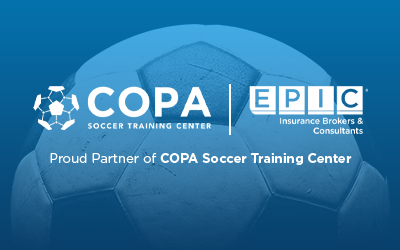Updated Voluntary Standard for Aerial Lifts and Scissor Lifts
The New American National Standards Institute (ANSI) standard for Mobile Elevated Work Platforms (MEWPs), such as boom and scissor lifts, takes effect on March 1, 2020.
The Occupational Safety and Health Administration (OSHA) identifies MEWP’s as Aerial Work Platforms (AWP’s). It is important to note that, at this time, OSHA regulations governing AWP’s has not changed.
ANSI standards are consensus standards that are used as a guideline for best practices and are often adopted by OSHA. The new ANSI standard has not been adopted by OSHA, however, MEWP manufacturers are compelled to comply with the standard for liability reasons. All users of rented equipment will be impacted by the new standard and users or owners of equipment should consider revising their training to include elements of the new standard.
Between now and March 1, operators should be trained to the new (voluntary) standards. The standards not only require operators to be trained, but their supervisors as well. To comply, the training must be based on the new standards. Rescue and risk assessment plans are required as well.
For operators, the training includes general-knowledge and practical-application components. The general-knowledge portion can be instructor-led or completed online. Operators must also demonstrate proficiency in operating the aerial lifts (MEWP). Supervisors of anyone operating an aerial lift must undergo the same classroom or online training as the operator, but they are not required to undergo the hands-on component.
This may be a good time to retrain lift operators and supervisors. New training requirements:
- Reading the operator manual
- Doing a walk-around inspection
- Familiarizing yourself with the controls
- Understanding the equipment’s limitations
- The rescue plan to be utilized by personnel on the ground
A thorough explanation of the changes: tmhnc.com/blog/new-ansi-standard-changes-jlg-mewps-awps
OSHA Has Updated Their National Emphasis Program on Amputations
OSHA has issued an update to its National Emphasis Program (NEP) on amputation hazards in manufacturing industries. The NEP provides updated guidance for Compliance Safety and Health Officers (CSHOs) conducting inspections in manufacturing workplaces having machinery and equipment that can potentially cause amputations.
Of note: OSHA is now using amputation reports that employers have made, as well as BLS incident rate and amputation rate data, for selecting industries likely to have equipment that could cause amputations. According to OSHA, 75 NAICS codes are covered under the NEP (all manufacturing) and can be found in Appendix B of the compliance directive (CPL 03-00-022).
This is a good time to review your machine guarding program, machine guards, and machine safety devices. An OSHA fact sheet can be found at: osha.gov/OshDoc/data_General_Facts/amputation-factsheet.pdf
OSHA’s Electronic Reporting Requirements
March 20, 2020 is the deadline for electronically reporting your OSHA Form 300A “Summary of Work Related Injuries and Illnesses” for calendar year 2019. Data collection will begin on January 2, 2020.
Employers in states regulated by federal OSHA have been required to electronically submit certain records of occupational injuries and illness. The electronic reporting requirements, along with the incorporation of an existing statutory prohibition on retaliating against employees for reporting work-related injuries or illnesses, were added to federal OSHA’s recording and reporting regulations found in the Code of Federal Regulations, title 29, Part 1904.
On April 30, 2018, federal OSHA posted a “trade release” requiring all affected employers to submit injury and illness data in the federal OSHA Injury Tracking Application (ITA) online portal, even if the employer is covered by a state plan that has not completed adoption of their own state rule. See the trade release at: osha.gov/news/newsreleases/trade/04302018.
The ITA website contains easy-to-follow instructions on how to submit your injury and illness records to OSHA. The website includes a section on Frequently Asked Questions (FAQ’s) that can be helpful in navigating the new rule. In addition, the web site explains:
Who has to submit: Establishments with 250 or more employees that are currently required to keep OSHA injury and illness records, and establishments with 20-249 employees that are classified in certain industries with historically high rates of occupational injuries and illnesses.
- To determine if your organization is required to submit your injury and illness data go to: osha.gov/recordkeeping/NAICScodesforelectronicsubmission.html
- To determine if your organization is exempt from these requirements go to: osha.gov/recordkeeping/ppt1/RK1exempttable.html
What needs to be submitted: Covered establishments must electronically submit information from their 2019 OSHA Form 300A.
OSHA will post the establishment-specific injury and illness data under this recordkeeping rule on its public website: osha.gov
How to submit: OSHA has provided a secure website that offers three options for data submission. First, users will be able to manually enter data into a web form. Second, users will be able to upload a CSV file to process single or multiple establishments at the same time. Last, users of automated recordkeeping systems will have the ability to transmit data electronically via an API (application programming interface).
Other important injury and illness submittal information includes:
- A third party that maintains injury and illness data for an employer will be allowed to submit to OSHA.
- A firm with more than one establishment may submit establishment-specific data for multiple establishments.
When you should submit: For 2018, covered establishments must submit information from their completed 2019 Form 300A by March 2, 2020.
Source: United States Department of Labor Occupational Safety and Health Administration
The FMCSA’s Drug & Alcohol Clearinghouse
Employers who operate commercial motor vehicles (CMVs) that require a commercial driver’s license (CDL) or commercial driver’s permit (CLP) are required to have a drug and alcohol testing program that complies with Federal Motor Carrier Safety Regulations (FMCSR). The FMCSA’s Commercial Driver’s License Drug and Alcohol Clearinghouse data base will be operational on January 6, 2020.
The Clearinghouse is designed to enhance safety on our nation’s roadways by making use of the Clearinghouse mandatory to report and query information about driver drug and alcohol program violations. Employers will be required to conduct both electronic queries within the Clearinghouse and manual inquiries with previous employers. Employers, FMCSA, State Driver Licensing Agencies and State law enforcement personnel will have real-time access to quickly identify drivers who are not legally permitted to operate CMVs due to drug and alcohol program violations. The Clearinghouse will ensure that drivers who committed any violations first complete the necessary return-to-duty steps before getting back behind the wheel.
Registration began in fall 2019 – that’s when employers were able to establish an account that will allow access to the Clearinghouse once it becomes operational on January 6, 2020.
You can access the Clearinghouse here: clearinghouse.fmcsa.dot.gov/.
Source: Michael Nischan, CDS, CCSP, VP Transportation & Logistics Risk Control
Related Content
Products
Risk Management
Our experienced teams take an enterprise-wide approach, consulting closely with you to identify, analyze and ...
Industries
Construction
A professional team of nationwide specialists dedicated to delivering impactful risk management and insurance ...
Industries
Transportation & Logistics
Managing risk for logistics companies requires an unparalleled level of service, years of experience and a ...


